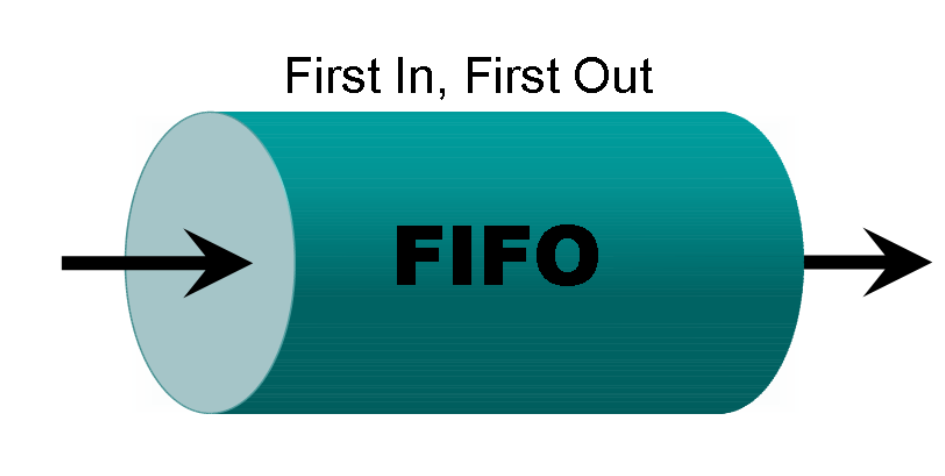并发编程-Condition源码分析&基于Condition实现阻塞队列
上一篇说猜测了condition的实现原理,本篇对condition源码进行剖析,并且来使用condition实现一个阻塞队列,同时聊聊有哪些东西的底层使用了condition。So Run。。。
上篇回顾
主要是这两个方法
【await】:可以阻塞同一把锁上的N个线程、释放锁
【signal】:唤醒一个等待在用一把锁上的线程
如何让线程等待:有一个等待队列来存储等待中的线程
唤醒等待的线程:condition的等待队列,和aqs中的同步队列是并行的,会牵扯到AQS中同步队列和Condition中的等待队列的转移,那是如何做的呢。
源码分析
await:
- 释放锁
- 释放锁的线程应该被阻塞
- 被阻塞后需要存储在队列中
- 需要重新竞争锁
- 要能够处理interrupt的中断响应
public final void await() throws InterruptedException { if (Thread.interrupted()) throw new InterruptedException(); // 添加到等待队列 Node node = addConditionWaiter(); //完整的释放锁(考虑到重入锁的问题) int savedState = fullyRelease(node); int interruptMode = 0; //如果当前节点不在aqs同步队列上,因为只有确定当前的线程不在aqs队列中咱们才去阻塞 while (!isOnSyncQueue(node)) { //阻塞当前线程,**注意当其他线程调用signal()时候,当前线程会从这里进行执行,因为上下文切换会保存当前程序的寄存器和程序计数器 LockSupport.park(this); //判断当前被阻塞的线程是否是因为interrupt而唤醒的 //->因为interrupt中断的操作,会唤醒处于等待的线程,所以这里有可能不是被signal唤醒的而是被interrupt唤醒的 if ((interruptMode = checkInterruptWhileWaiting(node)) != 0) break; } // 重新竞争锁 savedState这个表示的被释放锁的重入次数 if (acquireQueued(node, savedState) && interruptMode != THROW_IE) interruptMode = REINTERRUPT; if (node.nextWaiter != null) // clean up if cancelled unlinkCancelledWaiters(); if (interruptMode != 0) reportInterruptAfterWait(interruptMode); }这里构建condition队列,并把当前的线程添加进队列中,想象一下,
- 现在有线程A、B来抢占线程,这个时候线程A抢占到了锁,他要执行await的方法,那这个时候AQS队列中的当前线程是A,并且线程A也会被放在condition队列中,
- 那这个时候他就要释放锁,这样好把aqs中的位置空出来,这个时候线程B就可以对锁进行抢占了,那线程B抢占到锁就有机会去调用signal方法去唤醒
- 线程B为什么知道他可以对锁进行抢占了呢,那是因为在上面j释放锁的时候调用了ava.util.concurrent.locks.AbstractQueuedSynchronizer#release,这个方法调用了unparkSuccessor(),他是对aqs队列中的线程进行唤醒的方法,我们上一篇讲过
//这里不用考虑线程安全性,因为在lock中执行的 private Node addConditionWaiter() { Node t = lastWaiter; // If lastWaiter is cancelled, clean out. if (t != null && t.waitStatus != Node.CONDITION) { unlinkCancelledWaiters(); t = lastWaiter; } // 这里把当前线程加入到队列中 Node node = new Node(Thread.currentThread(), Node.CONDITION); if (t == null) firstWaiter = node; else t.nextWaiter = node; lastWaiter = node; return node; }signal:
- 要把被阻塞的线程先唤醒
- 把等待队列中的线程转移到AQS队列中
- 再次回到await方法中直接抢占锁
public final void signal() { if (!isHeldExclusively()) throw new IllegalMonitorStateException(); //得到当前的等待队列 Node first = firstWaiter; if (first != null) doSignal(first); } //唤醒等待队列中的一个线程 private void doSignal(Node first) { do { if ( (firstWaiter = first.nextWaiter) == null) lastWaiter = null; first.nextWaiter = null; } while (!transferForSignal(first) && (first = firstWaiter) != null); }final boolean transferForSignal(Node node) { //如果没有办法修改这个节点的状态,那证明当前节点已经被取消,那就去操作下一个节点,返回到do代码块中,把当前线程抛弃 if (!compareAndSetWaitStatus(node, Node.CONDITION, 0)) return false; //上篇说这个是尾插法把节点插入队列,这里就是把等待队列插入aqs队列的尾部 Node p = enq(node); int ws = p.waitStatus; if (ws > 0 || !compareAndSetWaitStatus(p, ws, Node.SIGNAL)) //进行唤醒,唤醒后因为cpu记住了上次阻塞的地方,所以从【await()->LockSupport.park(this)】这里进行唤醒 LockSupport.unpark(node.thread); return true; }再次回到await方法中直接抢占锁(现在就执行这里的代码,acquireQueued()这个是aqs中的逻辑,实现锁的抢占,按照aqs的那套执行,上篇已经分析过)
public final void await() throws InterruptedException { if (acquireQueued(node, savedState) && interruptMode != THROW_IE) interruptMode = REINTERRUPT; if (node.nextWaiter != null) // clean up if cancelled unlinkCancelledWaiters(); if (interruptMode != 0) reportInterruptAfterWait(interruptMode); }
Condition被使用在哪里呢?
实际上我们直接使用Condition的地方很少,主要用在阻塞队列中(阻塞队列一般被使用在线程池中),生产者/消费者、流量缓冲等等,我们这里主要讲讲什么是阻塞队列。
【阻塞队列】:阻塞队列是一种线性表,允许一端插入另外一端删除(FIFO先进先出),可以使用【数组】和】进【链表】进行实现。当你要插入数据的时候支持阻塞插入,当取数据出来的时候支持阻塞移除,换言之,当你插入的时候你的队列满了,那插入数据的线程就要等待(阻塞),如果队列空了,则阻塞移除元素的线程。实际上就是一个生产者消费者模型。一般来说,有两种队列,一种【有界队列】、和【无界队列】(实际上也是有大小的,只不过他可以支持很大,直到你的内存爆炸)
基于condition实现一个阻塞队列(这里的实现有点想juc中的java.util.concurrent.ArrayBlockingQueue,只不过人家使用数组来实现的阻塞队列)
public class ConditionQueue { // 容器 private List<String> items; // 表示已经添加的元素个数 private volatile int size; //容器的容量 private volatile int count; private Lock lock = new ReentrantLock(); //take private Condition notEmpty = lock.newCondition(); //add private Condition notFull = lock.newCondition(); private ConditionQueue(int count) { this.count = count; items = new ArrayList<>(); } private void put(String item) throws InterruptedException { lock.lock(); try { if (size >= count) { // 队列满了,需要等待 System.out.println("full of pipeline"); //这里就是阻塞当前线程,然后把当前线程阻塞在队列中,当阻塞的时候就通知了aqs中的头结点的下一个线程对锁进行抢占,这个时候执行take的线程就抢占到了锁 notFull.await(); } ++size; items.add(item); notEmpty.signal(); } finally { lock.unlock(); } } private String take() throws InterruptedException { lock.lock(); try { if (size == 0) { System.out.println("empty of pipeline"); notEmpty.await(); } --size; String item = items.remove(0); // 同理,他消费了其中的一个数据,然后他就去把上面的阻塞队列中的执行put方法的线程唤醒(把阻塞队列中的线程放到aqs队列中)然后aqs就会进行他的逻辑进行锁的抢占 notFull.signal(); return item; } finally { lock.unlock(); } } public static void main(String[] args) throws InterruptedException { ConditionQueue conditionQueue = new ConditionQueue(10); Thread thread = new Thread(() -> { Random random = new Random(); for (int i = 0; i < 1000; i++) { String item = "item" + i; try { conditionQueue.put(item); } catch (InterruptedException e) { e.printStackTrace(); } try { Thread.sleep(random.nextInt(1000)); } catch (InterruptedException e) { e.printStackTrace(); } } }); thread.start(); //这里是让生产数据的线程先去生产一下数据, Thread.sleep(100); Thread thread1 = new Thread(() -> { Random random = new Random(); //进行自旋 for (; ; ) { try { System.out.println(conditionQueue.take() + "被消费了"); } catch (InterruptedException e) { e.printStackTrace(); } try { Thread.sleep(random.nextInt(1000)); } catch (InterruptedException e) { e.printStackTrace(); } } }); thread1.start(); } }阻塞队列中常用的方法
添加元素
- add():如果队列满了就抛出异常
- offer():如果队列满了就返回false
- put():如果队列满了就一直阻塞
- offer(timeout):如果队列满了就先阻塞你传入的timeout的时间,否则就返回false
移除元素的时候
- element:元素为空抛异常
- peak:true / false
- take:队列一直阻塞
- poll(timeout):如果超时还没有产生数据,那就返回null
JUC中的阻塞队列
JUC中针对不同的场景,有不同的阻塞队列为我们提供
ArrayBlockingQueue:基于数组
LinkedBlockingQueue:基于链表(单向链表)
PriorityBlockingQueue:基于优先级队列,可以看到他是基于Comparator进行实现的,所以在使用它的时候需要去实现这个接口。
DelayQueue:你可以设置你的元素多久执行,这里有点像rabbitmq中的延迟队列,比如说你的订单15分钟没有支付就取消,那就可以使用这个来做
@ToString public class DelayQueueExample implements Delayed { String orderId; long start=System.currentTimeMillis(); long time; public DelayQueueExample(String orderId, long time) { this.orderId = orderId; this.time = time; } public static void main(String[] args) { } //这里表示下次执行的时间 @Override public long getDelay(TimeUnit unit) { return unit.convert((start+time)-System.currentTimeMillis(),TimeUnit.MILLISECONDS); } // 这里对任务进行排序(根据时间的先后做比较) @Override public int compareTo(Delayed o) { return (int) ((int)this.getDelay(TimeUnit.MICROSECONDS)-o.getDelay(TimeUnit.MICROSECONDS)); } }测试
public class DelayQueueTest { static DelayQueue delayQueue = new DelayQueue(); public static void main(String[] args) throws InterruptedException { delayQueue.offer(new DelayQueueExample("1001", 1000)); delayQueue.offer(new DelayQueueExample("1002", 5000)); delayQueue.offer(new DelayQueueExample("1003", 4000)); delayQueue.offer(new DelayQueueExample("1004", 7000)); delayQueue.offer(new DelayQueueExample("1005", 8000)); delayQueue.offer(new DelayQueueExample("1007", 3000)); delayQueue.offer(new DelayQueueExample("1008", 2000)); while (true){ Delayed take = delayQueue.take(); System.out.println(take); } } }这里就是按照你的指定的时间顺序依次执行的
SynchronousQueue:没有任何存储结构(因为没有存储容器,当生产者去生产数据的时候,没有消费者消费,那就会阻塞,反之亦然,当消费者去消费,而没有生产者的时候消费者也会阻塞。那多个消费者和生产者阻塞的话必然会产生一个阻塞队列,然后互相去唤醒,有点像AQS,实际上利用了阻塞队列来控制了生产者和消费者),线程池中就只用巧妙了使用了这个java.util.concurrent.Executors#newCachedThreadPool()




